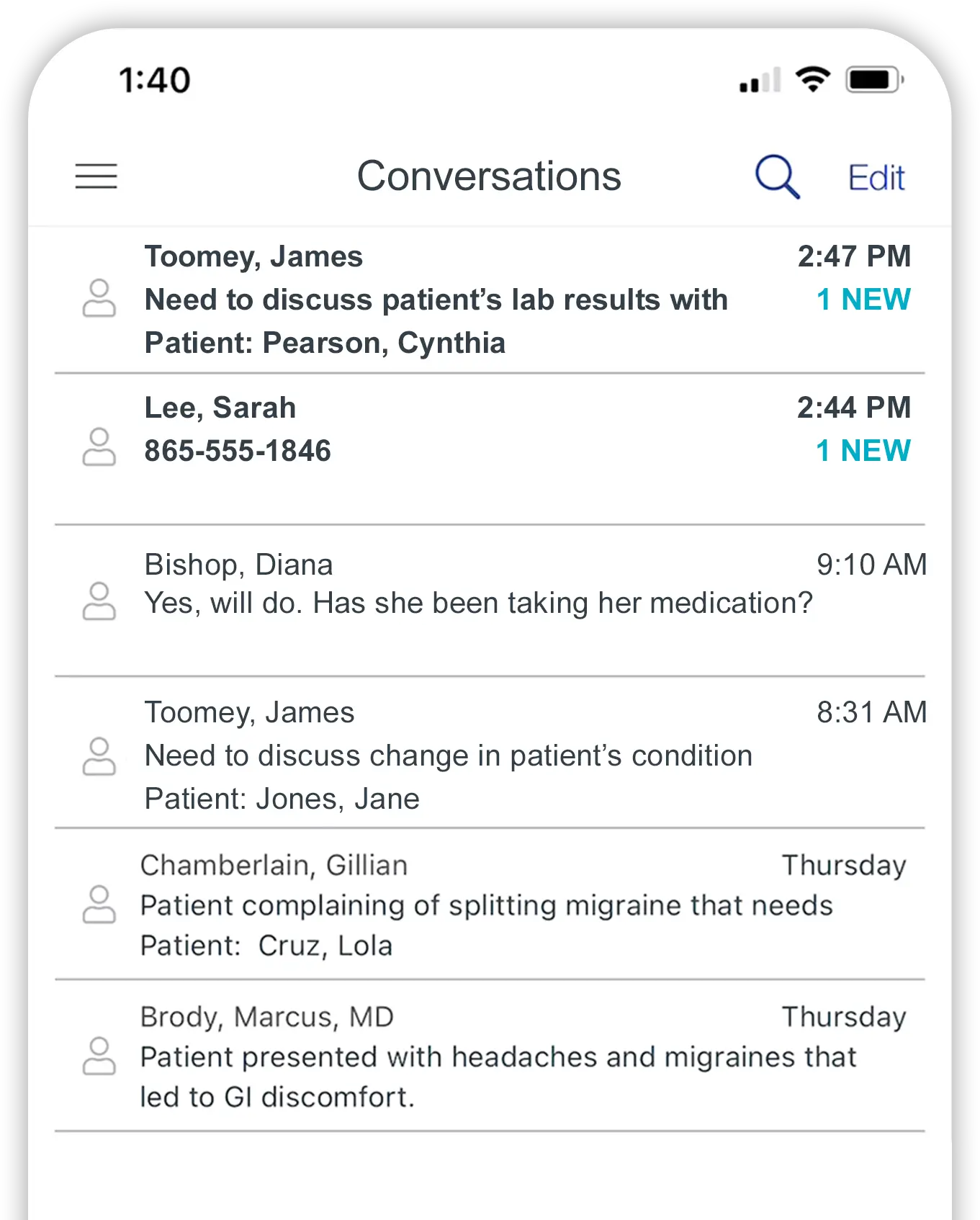Event
Why Integrations Matter for Clinical Communication
Watch Now
Organization
Cardiology Consultants of Toms River
Location
Toms River, New Jersey
Solution
Practice Communication
TABLE OF CONTENTS
2.7secs
Read time for urgent calls
5 mins
Total avg. time per interaction
80%
of routine calls routed efficiently
Streamlined nearly 1,000 patient messages in six months, with urgent communications read in just 2.7 seconds on average
Eliminated lost messages and misdirected calls through a centralized admin inbox system
Protected physician privacy while maintaining seamless patient communication through number masking
Created predictable response times for patients, with routine calls returned before office hours begin
At Cardiology Consultants of Toms River, Clinical Coordinator Stephanie Fusaro oversees communications for a diverse medical practice serving patients across two New Jersey locations. The practice’s five physicians span nine specialty areas, including cardiovascular disease, internal medicine, and interventional cardiology, with one cardiologist handling hospital calls. This complex structure demands precise communication management—a challenge that would ultimately lead Stephanie and her team to seek innovative solutions.
For Stephanie, watching communication breakdowns impact patient care had become a daily concern. “Patients were saying they were leaving messages with the service, and no one was getting back to them, but we never received anything,” she explained, describing the frustrations with their previous answering service.
The problems extended beyond lost messages. Physicians frequently received non-urgent communications at inconvenient hours and calls meant for other providers when they weren’t on call. The system’s inability to properly route and prioritize messages was causing unnecessary disruptions to their personal time while compromising patient care.
Even when messages did reach the right physician, the service’s mobile app created additional hurdles. Providers had to exit the app to locate essential patient information and callback numbers, leading to delays in response times. These technical limitations, combined with the misrouted messages and an impending cost increase, made it clear to Stephanie and the practice leadership that a change was necessary.
After hearing positive feedback from colleagues at another practice, Stephanie and her team explored PerfectServe’s Medical Practice Communication solution. The platform’s comprehensive features and intuitive design offered solutions to their most pressing challenges. Following a demonstration that highlighted its capabilities, the practice moved forward with implementation.
The transformation in communication efficiency became immediately apparent to Stephanie and her team. Within the first six months, the impact was measurable across several key areas:
1
Message Management and Classification
The new system processed nearly 1,000 messages, with 80% properly classified as routine communications and 20% identified as urgent matters requiring immediate attention. This classification system proved crucial for prioritizing patient care effectively.
2
Rapid Response to Urgent Needs
The practice achieved remarkable response times for urgent communications:
3

4
Enhanced Provider Experience
For the physicians, the new system brought welcome improvements to their daily routines. The platform’s built-in privacy features mask personal phone numbers while maintaining professional connectivity.
“The accessibility to messages for our practice and the use of the phone app—where our office number, not the physician’s, comes up—made a big difference,” Stephanie explained.
The voice-to-text feature and one-click callback functionality further streamlined the physicians’ workflow, allowing them to focus more on patient care and less on message management.
5
Patient Satisfaction
From the patient perspective, the impact has been significant. The new system created predictability in communication that patients quickly came to appreciate.
“Patients love that all the calls are returned between eight and nine in the morning, before office hours even start,” Stephanie shared.
This consistency in communication has helped build patient trust and satisfaction.
The transition to PerfectServe has transformed communication management at Cardiology Consultants of Toms River. With nearly 1,000 messages handled in six months and urgent messages being read in under three seconds on average, the practice has achieved a new level of efficiency in patient communication.
But what matters most about these improvements is pretty simple: doctors can focus more of their time on patient care, and patients know their calls will always be answered.